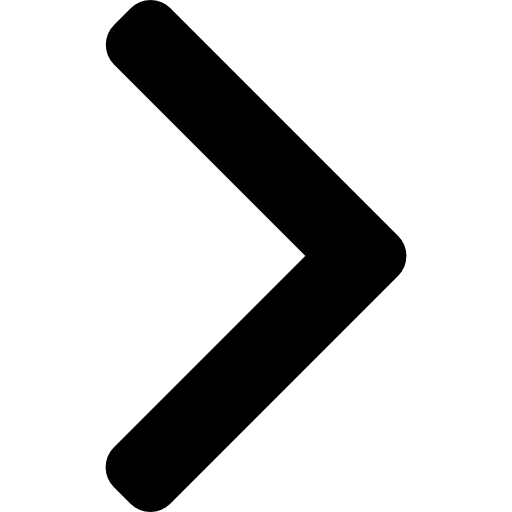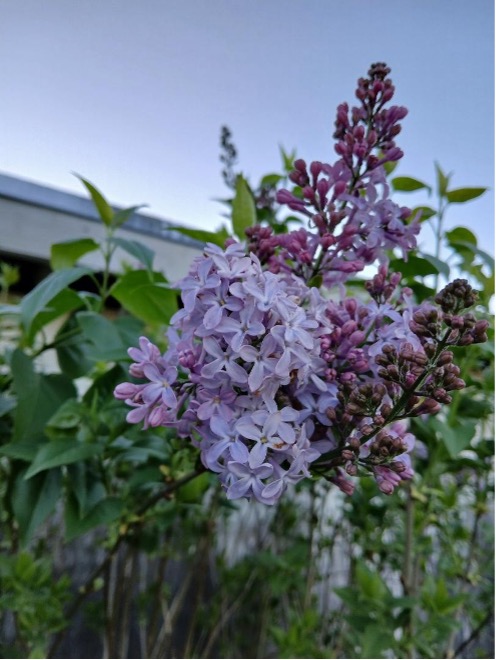
Above: my Happy Valley, California yard is the perfect climate for lilacs, getting cold enough to set good blooms.
My wall of five bushes has now been joined by two other lilacs and I won’t say that I won’t plant more.
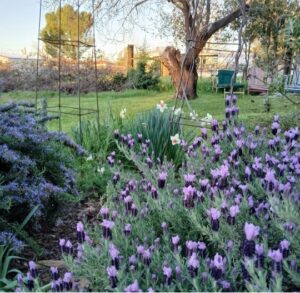
Flower gardening the long game, above, my circle flower bed with peaches and cream daffodils which have finally naturalized, below, some sort of native white flowering bushes, Western red bud which took forever to look not dead and even longer to flower, shown up by a cooperative Joseph’s Coat climbing rose bush which bloomed immediately. Rose are not the fussy ones!
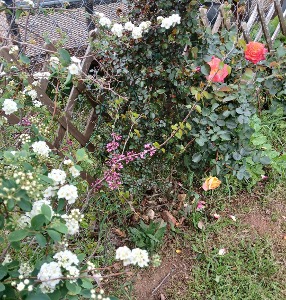
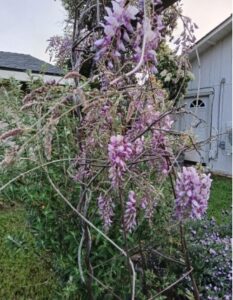
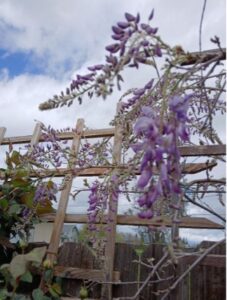
Above: wisteria in all its spring glory. I adore wisteria and look forward all year to the beautiful and fragrant blooms. Now that both wisteria bushes, front and back, are well established, I can rely on a lovely spring bower.
This year, the spring holiday I am focusing on is Passover. My friend Louise is hosting a Seder this year and has been kind enough to share her menu, Passover customs, and artful table décor. Our shared background in art keeps us interested in creating table designs as well as invitations, place cards, and of course, artfully presented food. As one of the world’s oldest religions, Judaism has traditions going back to the 5th century BCE. As many of you know, I was raised as a complete heathen, but I enjoy learning about different cultures and rites and food traditions. I really like that a lot of Jewish customs center in the home, with women overseeing much of the preparation.
Louise will use her mother’s special Seder plate, with wells for the different elements, such as: horseradish or maror (bitter herbs,) roasted lamb shank bone, Charoset (a chopped apple, nuts, and wine mix,) greens, parsley, roasted egg. Modern Seder plates may have other additions representing meaningful ideas and marginalized groups. Louise will add a fresh orange, to honor women and the trans and gay community. I read that some folks add an acorn to acknowledge that they are celebrating on indigenous land. The flexibility to evolve as people learn more, along with honoring the traditional elements, seems very welcoming to new guests and satisfying and respectful to the old.
So, matzoh, yes, it seems to show up quite a bit in the Seder meal. As an unleavened (cracker-like) bread, it is among the foods the Israelites could carry, in the hasty journey from slavery in Egypt, becoming a tradition during Passover. No leavened bread is used in commemoration of the Exodus, so matzoh meal is used extensively.
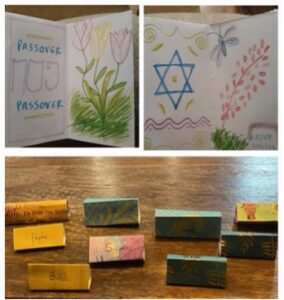
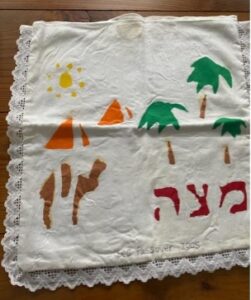
Above, clockwise from upper left: two pages from Louise’s hand drawn Passover invitations, made in book style, filled with spring and Passover symbols, her younger son’s adorable matzoh cover with a desert theme, painted when he was 3 years old, and an assortment of collaged place cards. Below: Matzoh plate and Elijah’s cup.


Louise’s Seder Menu
The Seder Plate, including:
Maror (Bitter Herbs,) Greens, Roasted Lamb Bone,
Roasted Egg, Charoset, & An Orange
Matzoh
Matzoh Ball Soup
Gefilte Fish
Beef Brisket with Fruit
Mushroom Leek Kugel
Carrot Salad with Mint & Dates
Passover Pear Cake
Coconut Macaroons
Passover Wine
You may have noticed one of my favorite words on the menu, kugel. Louise had introduced me to her mother’s noodle kugel many years ago and after tasting it for the first time, it has earned a frequent place on my brunch menu. My interest in kugel is piqued by each new recipe I see. What exactly is it, you may ask. The one I make (Louise’s mother’s recipe) is a slightly sweet custardy baked dish with egg noodles, cottage cheese, pineapple, and a crispy cornflake cinnamon sugar topping. If you like rice pudding, I’d hazard a guess that you will like this dish. But the above kugel is savory and contains no dairy. Hmmm.
In googling kugel definition, I ran across a fun essay by a Bon Appetit magazine writer named Sarah Jampel, addressing this very question as well as presenting her recipe for a very similar to my beloved noodle kugel recipe, We Need to Talk About Kugel. As Sarah points out, kugels can be sweet or savory, made from not just noodles but grains, potatoes, rice and bread. The mushroom leek version that is on Louise’s menu is more like a veggie quiche or strata, with a few eggs and chicken stock instead of cream, and matzoh instead of bread or crust. In layman’s terms a kugel is a mixture that is baked in a dish: a casserole, if I’m not mistaken. However we identify it, I love it, and we are going to keep on enjoying it.
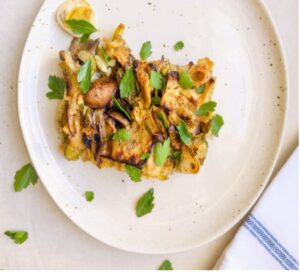
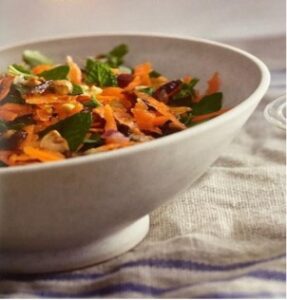
Above left: Mushroom and Leek Kugel, made with broken up matzoh and garnished with fresh parsley. Right: Carrot Salad with Mint & Dates. Louise did a test run of the recipe and declared it fresh and delicious and perfect for spring. As a mint hater, I would swap out the mint for Italian parsley or basil, but don’t go by me.
Mushroom Leek Kugel
- 2 tablespoon olive oil
- 2 cups thinly sliced leeks, rinsed well and patted dry, white and light-green parts only (from 2 medium leeks)
- 1 stalk celery, thinly sliced
- 4 oz white or cremini mushrooms, sliced
- 1/2 teaspoon salt
- 1/8 teaspoon ground pepper, or to taste
- 2 large eggs
- 3 matzo sheets (about 3 oz total), broken into large (about 2”) pieces
- 1 cup chicken broth
- ¼ cup flat-leaf parsley leaves, chopped, divided
Preheat oven to 350°F
Special equipment: sauté pan, wooden spoon or heat-proof spatula, large mixing bowl, whisk, 9×9 or similar size baking dish oiled or sprayed with cooking spray
1) Heat sauté pan over medium heat. Add olive oil to heated pan. Add leeks, celery, mushrooms, salt, and pepper. Cook and stir frequently, until vegetables have begun to soften and release liquid, about 5 to 10 minutes. Set aside to cool slightly.
2) Meanwhile, in a large bowl, whisk eggs and chicken broth. Add matzo and half of parsley, mixing thoroughly to ensure matzo are coated. Stir in the vegetables. Scrape mixture into prepared baking dish and bake for 25 to 35 minutes or until top is lightly browned and knife inserted in to center of kugel tests almost clean.
5) Remove from oven and let kugel stand at least 5 minutes before sprinkling with remaining parsley. Serve warm or at room temperature.
Another traditional food on the Seder plate is Charoset, a chopped fruit and nut mixture, moistened with red wine. It sounds yummy to me and I would be tempted to eat it leftover, stirred into yogurt or spread on toast. This Epicurious recipe is like Louises’, and she recommends not adding the sugar or honey before tasting the apples for sweetness. Traditional Apple Walnut Charoset
As we noted above, Passover food needs to be flourless or using matzoh meal in place of flour. Traditionally, Passover dessert menus have featured matzoh meal sponge cakes and coconut macaroons, most recipes not calling for flour. Louise is making a nice and moist pear cake and dark chocolate-dipped macaroons, packed with a ton of coconut. They freeze perfectly so she has them well-wrapped for the freezer, awaiting the big day. Below:
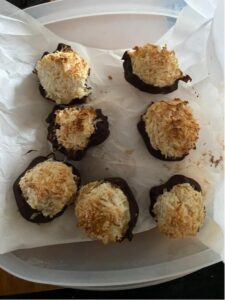
I am planning a low-key Easter this year. Last year, the Easter breakfast crew gathered in Oregon and did the big breakfast with lots of party favors, decorated eggs and sugar cookies, and abundant handmade delights. We have been doing these Eater breakfasts for so long now, that the next generation has started to show up. Here are some photos from last year, at Easter, Klamath Falls.
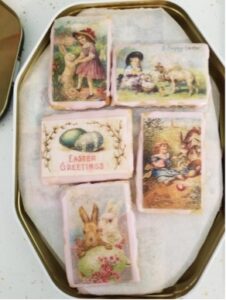


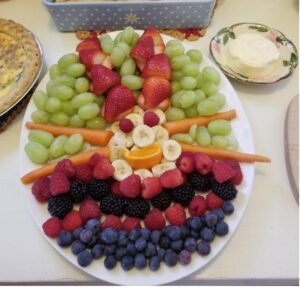
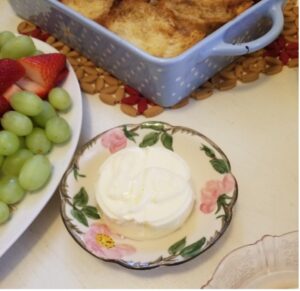
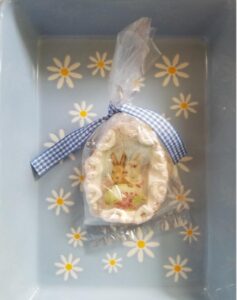
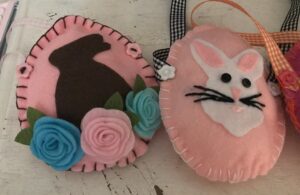
Happy Spring!
